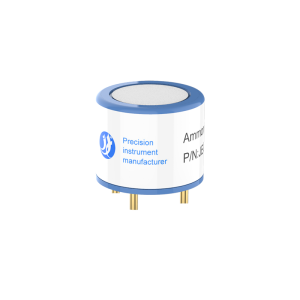Backgroud:
Industrial gas detectors are crucial in many industries, such as mining, refining, petroleum extraction, and manufacturing. They work to ensure the overall safety of your organization and employees.
But selecting the right type of detector to meet your company’s unique needs can seem like a daunting task. There are various technologies to choose from – each functioning under different operating principles, and each with different strengths and weaknesses.
The following is an overview of some of the most common types of industrial gas detectors, a description of how they operate, and conditions in which they work best.
Pellistor/Catalytic Bead (CB) Industrial Gas Detectors
These detectors use catalytic combustion to measure combustible gases at Lower Explosive Level (LEL) concentrations.
This type of sensor has been in use for nearly a century and works by measuring the temperature difference between two beads – one inert one and one coated in a chemical catalyst. As they are heated, the one with the catalyst will heat more.
They respond to a full range of flammable gases, including hydrogen, methane, butane, propane, and carbon monoxide. Still, they can be prone to poisoning when exposed to high concentrations of flammable and combustible gases. When calibrated to a single gas, these detectors may also provide inaccurate readings for all other gases.
These sensors work best for detecting hydrocarbon gas, hydrogen, or acetylene where there may be extreme fluctuations in temperature or humidity.
Point/Non-Dispersive Infrared (PIR/NDIR) Industrial Gas Sensors
Infrared industrial gas detectors measure and compare two wavelengths – one at the gas absorbing (active) wavelength and one at a reference wavelength that is not absorbed by the gas.
These gas detectors work well for detecting hydrocarbon gases, especially in low-oxygen environments. They also work well for detecting high concentrations of silicones, hydride gases, or halogenated hydrocarbons. These sensors should not be used where hydrogen may be present, though, as the gas does not absorb infrared light.
How MEMS-based sensors outperform NDIR and Cat Bead sensors

Electrochemical (EC) Industrial Gas Detectors
Electrochemical gas detectors work by converting gas concentrations into an electrical current. The gas diffuses into the sensor through a membrane where it comes into contact with a working electrode and is oxidized. This electrochemical reaction results in an electric current passing through the external circuit.
The external circuit measures and amplifies the signal processing functions and reports a reading to the user. Different types of cells have been created to detect specific hazardous gases, including hydrogen sulfide, carbon monoxide, and oxygen (to detect enrichment or deficiency).
Electrochemical gas detectors work best for detecting hazardous gases in the ppm range or in confined spaces that may experience oxygen enrichment or deficiency.
Depending upon the acoustic qualities of the sound, the ultrasonic gas detector can identify and measure the leak rate and provide early warnings. The primary benefit of these detectors is that the gas does not need to reach the detector’s sensing element to be alerted to the leak. The device hears the leak without coming into contact with the gas.

Micro-Electromechanical (MEMS)-Based Industrial Gas Detectors
These gas sensors use a micro-electromechanical (MEMS) transducer to detect a full range of hazardous gases. This type of sensor works by measuring changes in the thermal properties of surrounding air and gases in its proximity using an embedded heater and thermometer.
The MEMS-based sensors can measure a full range of flammable or combustible gases, including mixtures. They can classify detected gas samples into hydrogen, methane, light gas, medium gas, or heavy gas. They are not susceptible to poisoning even when exposed to high concentrations of hazardous gases.
MEMS-based industrial gas detectors work well in most conditions. They are particularly well suited for conditions in which multiple gases may be present and perform well across a wide range of environmental conditions – even extreme conditions.
So Which are the Best Gas Leak Detectors?
As you’d imagine, the best gas leak detector for your need depends on a lot of variable.
Most industrial gas detectors allow for either fixed or portable detection to meet a wide range of user needs. When selecting the right industrial gas detector for your environment, you must understand each type of sensor’s limitations and strengths. This information will help you determine which one is best suited to keep your workplace and employees safe.
 : +86 155 8830 2704
: +86 155 8830 2704 : jxdziot@gmail.com
: jxdziot@gmail.com
